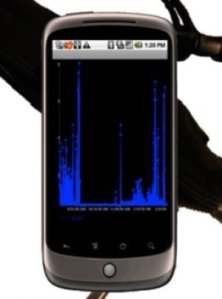Also discussed here: Turning smartphones into personal, real-time pollution monitors (ScienceDaily. ScienceDaily, Feb.18, 2015)
Today we review an article that describes a project at Barcelona in southern Spain involving the monitoring of exposure by 50 children from 29 schools using a smart phone and a sensor to measure black carbon during the day- at home, commuting to school and in school. While only 4% of their time was spent commuting, exposure was 13% of the daily total and this also had the highest levels while the levels at home were the lowest.

Key Quotes:
“For 2 typical week days during 2012–2013, the children were given a smartphone with CalFit software to obtain information on their location and physical activity level and a small sensor, the micro-aethalometer model AE51, to measure their black carbon levels simultaneously and continuously”
“Although most children spent less than 4 percent of their day traveling to and from school, commuting contributed to 13 percent of their total potential black carbon exposure.”
“We found considerable variation in the black carbon levels during the day, with the highest levels measured during commuting periods (geometric mean = 2.8 μg/m3) and the lowest levels at home (geometric mean = 1.3 μg/m3)”






No comments:
Post a Comment